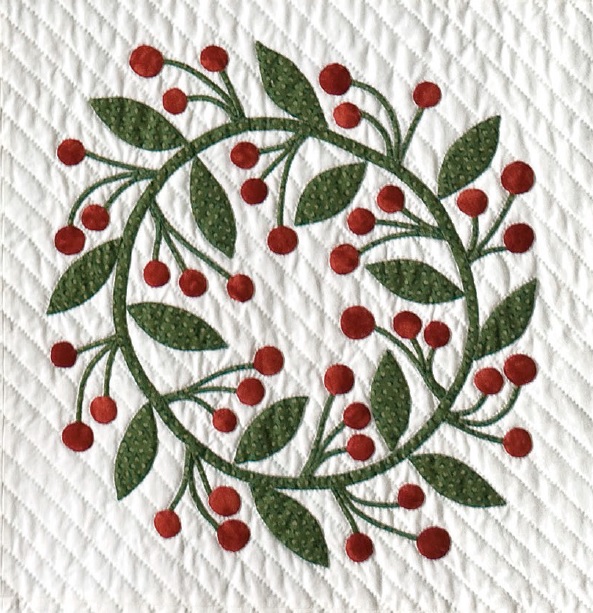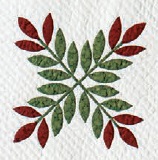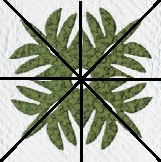This month we are exploring Baltimore Album quilts, which features a variety of applique blocks. There are as many styles of blocks as there are stories they tell.
Here are a few of the classics:
Wreath

Cross

Basket

Remember, your imagination is truly your only limit. Baltimore Album blocks can contain all sorts of designs from single illustrations like boats, animals, and people, to fully symmetrical cut work designs.
When creating your own Baltimore Album block, a great place to start is symmetry. Blocks can have no symmetry, much like the vase shown above, but often they at least begin with mirroring. Symmetry not only gave an orderly, balanced appearance to the blocks, but also aided in drafting the patterns.
Take a look:

This block is mirrored. The two halves of the block are identical to each other. To design this block, you only need to draw half of the pattern, then reverse the design for the other side.

This block is in quadrants. Each quarter is duplicated to complete the wreath. To design this block, you only need to draw a quarter of the pattern, then repeat it in the other quadrants.

This block is mirrored in eights. Each half of a quarter mirrors the other half. To design this block, you only need to draw an eighth of the design, then reverse the design for the other half of the quarter and trace into the remaining quarters.
Much like creating paper snowflakes, these designs can be sketched out on paper you’ve folded to create guidelines.
Here are the steps:
- Start with a piece of paper the size of your design.
- Fold it the number of times desired to create your design. For example, fold in half to create a mirrored design.
- Select one folded area of the paper to create the design. This defines your design space.
- Draw your design in the selected portion.
- During first drafts of applique, I usually don’t pay much attention to overlapping pieces. I like to draw how I want the finished piece to look, then add the parts hidden by overlaps in after I have the design like I want it.
- Often times, the first draft captures lots of good ideas, but everything isn’t exactly right. Perhaps it isn’t the right scale or it’s angled the wrong way. Lay a piece of tracing paper over your paper. Mark out the design space by making guide marks along the folded area of the paper. Trace the design onto the tracing paper, moving the original to relocate elements you want to shift or move. To change the scale of an element, copy your original, adjusting the scale as desired on a copier or printer, then trace to element into the design from the copy.
- If you still want more revisions, use another piece of tracing paper and repeat the process.
- Once the design is how you want it, copy your tracing paper using a copier or printer. At this point, I like to save it as a digital image as well if I’ve scanned it to print the design.
- Now you are ready to transfer your design to fabrics. Some appliquers like to make a full pattern, if this is the case simple duplicate your design as needed to complete the block. Others prefer to transfer directly to the fabric background rotating the design under a light box until the entire block is traced.
Ready to play? Using an app like Pinterest, search images of Baltimore Album blocks, pin them. Start collecting blocks that appeal to you. Look for elements, like flowers and leaves, that you like. What shapes appeal to you? See if you can identify what type of symmetry the designer used to create the block. With a little practice, you will spot them right away.
When working with applique designs, I find it particularly helpful to have digital copies of designs. They are easier to resize, store, and find later.
If you try designing a block, be sure to take a picture and share it with us on our Facebook Group, Project Parade. We love to see what you are up to!